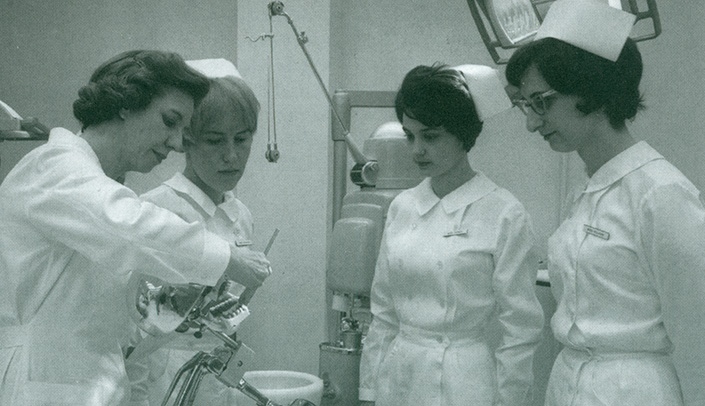Fifty-six years ago, the University of Nebraska College of Dentistry established the dental hygiene program. Initially started in a basement, today the program prepares world-class dental hygienists.
In 1964, College of Dentistry Dean Ralph Ireland, DDS, recruited Elizabeth Warner Waggener to create the dental hygiene program at the University of Nebraska. A graduate of the University of Michigan School of Dental Hygiene, Waggener worked for the U.S. Public Health Service in Washington, D.C., where she advised colleges and universities on designing such programs.
When Waggener arrived in Lincoln in January 1964, the university did not have room for the dental hygiene program. Construction of the new college of dentistry building was not complete, and there was no space in Andrews Hall, the home of the college at the time. The only space available was the half-finished basement with dirt floors in the Student Health Center.
The University of Nebraska received a grant from the W.K. Kellogg Foundation to help finance the program and provide furniture, equipment and staff salaries for the first two years. The new clinic space contained a small laboratory, restrooms, locker room, patient reception area and two small offices. When the first class started in September 1964, the program had the physical capacity for only 10 students. Classes were eight hours a day and students participated in clinic or lab work every afternoon.
Tight quarters did not prevent the students from learning and excelling. When the first class graduated in 1966, it ranked second in the country on National Dental Hygiene Board examinations.
After the university completed the construction of the new college of dentistry building in 1968, the program capacity doubled and today, the UNMC Department of Dental Hygiene accepts 24 students each year. The curriculum is a four-year program leading to a bachelor of science degree.
Instruction has changed since 1964. Today’s hygienists educate patients emphasizing prevention, along with treatment for tooth decay and periodontal disease. The demographics have changed, as well. Initially, students were generally made up of young, single, first-career women. Today, the classes include men, students with families, and those who have worked in other careers.
